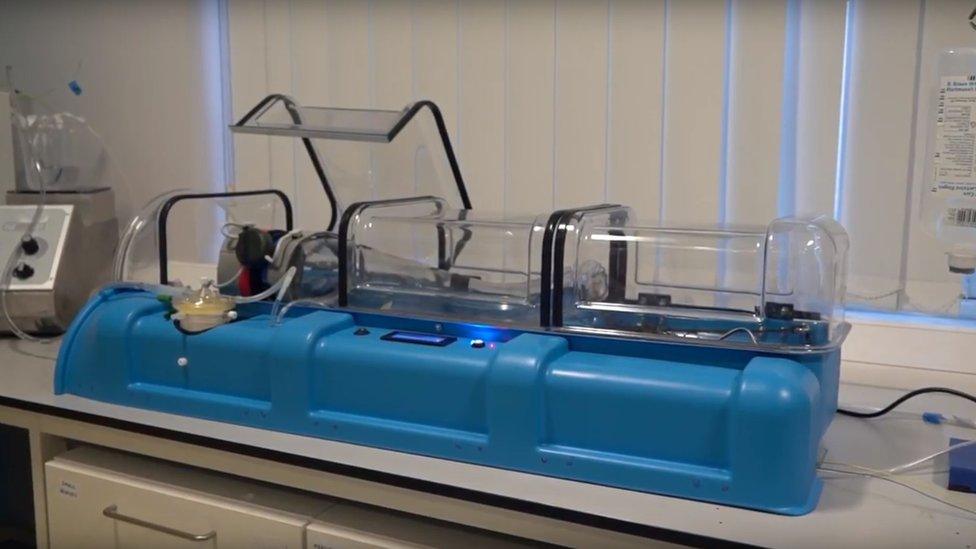Battlefield kit 'may reduce amputations'
- Published

The lightweight equipment aims to limit the damage to a limb while the casualty is transported to hospital
A new battlefield treatment technique which could reduce the need for amputations has been developed by medical researchers.
The Strathclyde University team developed a three-stage approach based on experiences in Iraq and Afghanistan.
It involves a new type of tourniquet and a cooling "sock" which preserves the limb from further damage.
Once at hospital, the limb is placed inside a protective box which sustains it while medics attempt a repair.
The team has also developed a blood salvaging technique known as HemoSep, which allows blood lost in surgery to be transfused directly back to the patient, reducing the need for donated blood.
Cooling sock
The researchers reviewed the current medical practice after Improvised Explosive Devices led to a high number of traumatic injuries during conflicts in Afghanistan and Iraq.
The new tourniquet applies pressure at different points on the limb, reducing damage to specific areas.
The cooling sock is then wrapped around the damaged limb to preserve it from further damage until the casualty can be evacuated to a care facility.
Once at a hospital, a protective box supplies the affected area with decontaminated air and maintains a blood supply.

A protective box will reduce the risk of infection while maintaining blood supply
Weighing only 5kg, the researchers believe the technology could also be used in non-military settings such as natural disasters.
Prof Terry Gourlay, head of biomedical engineering at Strathclyde University, said: "We looked at every stage of the journey an injured soldier follows after injury to ensure our solution was designed specifically for them.
"The system we have developed is essentially a life-support system for the limb which gives doctors precious time to attempt to repair damage while ensuring the safety of the patient."
Dr Neal Smith, capability adviser for the Defence Science and Technology Laboratory which funded the research, said: "While this technique may not be right for every injury, it is a hugely important innovation which could save the limbs of many more of those affected.
"It's a fantastic example of where we work with academics to fund life-changing research which has been turned into a product to improve the quality of life of those injured in service."
Following successful trials, the system is soon expected to be available commercially.